For expedition #3, we shifted from helicopter surveys to small vessel surveys (21ft long boats). We targeted the sampling of the MacKenzie Delta plume right after the freshet in order to keep track of seasonal changes in sediment transport from the Delta to the Beaufort Sea coast.
We are still tracking the winds as mother nature sets the limits for coastal water sampling. Forecast windows are slim for the Western Sector. Very strong winds have been blowing in the past weeks and it seems that a 24-hour window is our only way to get water there. The field team is quickly getting ready upon arrival in Inuvik on July 22.
On July 23, Dave McLeod, our knowledgeable boat pilot comes into town unexpectedly and the meeting has a good vibe. Dave picks up most of the equipment that is Aklavik-bound that night and he will come back the day after to pick up the scientists with Thomas Gordon, the ARI research assistant grant awardee. On the next day, Guislain, Édouard and Joannie are taken on a wonderful ride on the milky-brown waterway to Aklavik by David McLeod, Dave’s son. We learn that the word Aklavik means “the town of the grizzly bears”. That RIDE and that NIGHT: WOW! Almost upon arrival, Billy Storr and Dave start building a new A-frame for the deployment of our sensors from the boat. They work tirelessly until midnight.
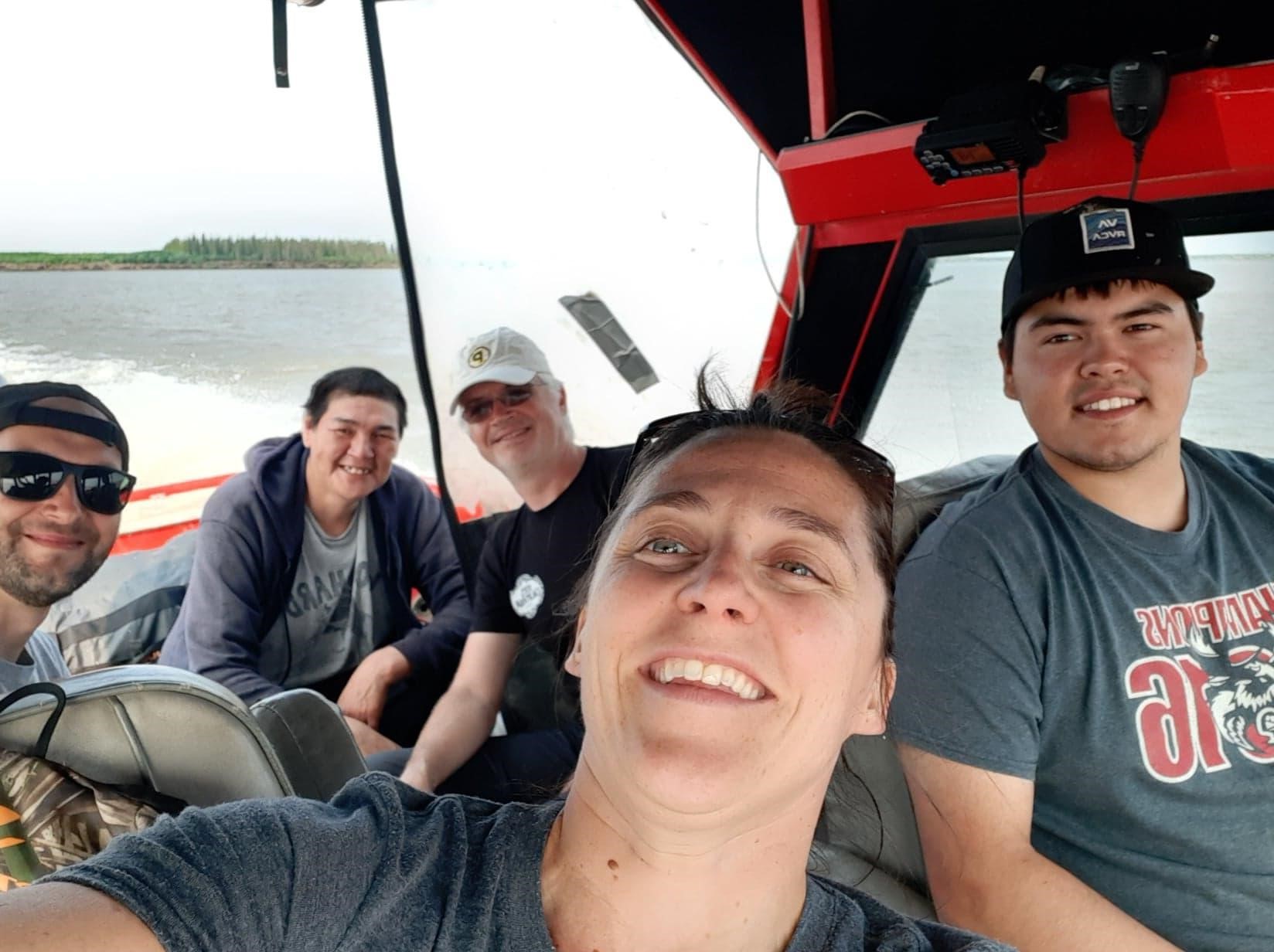
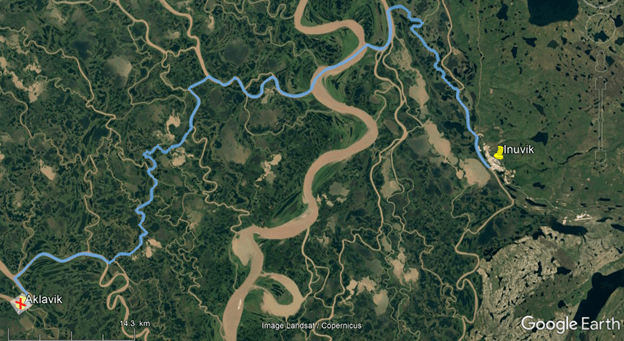
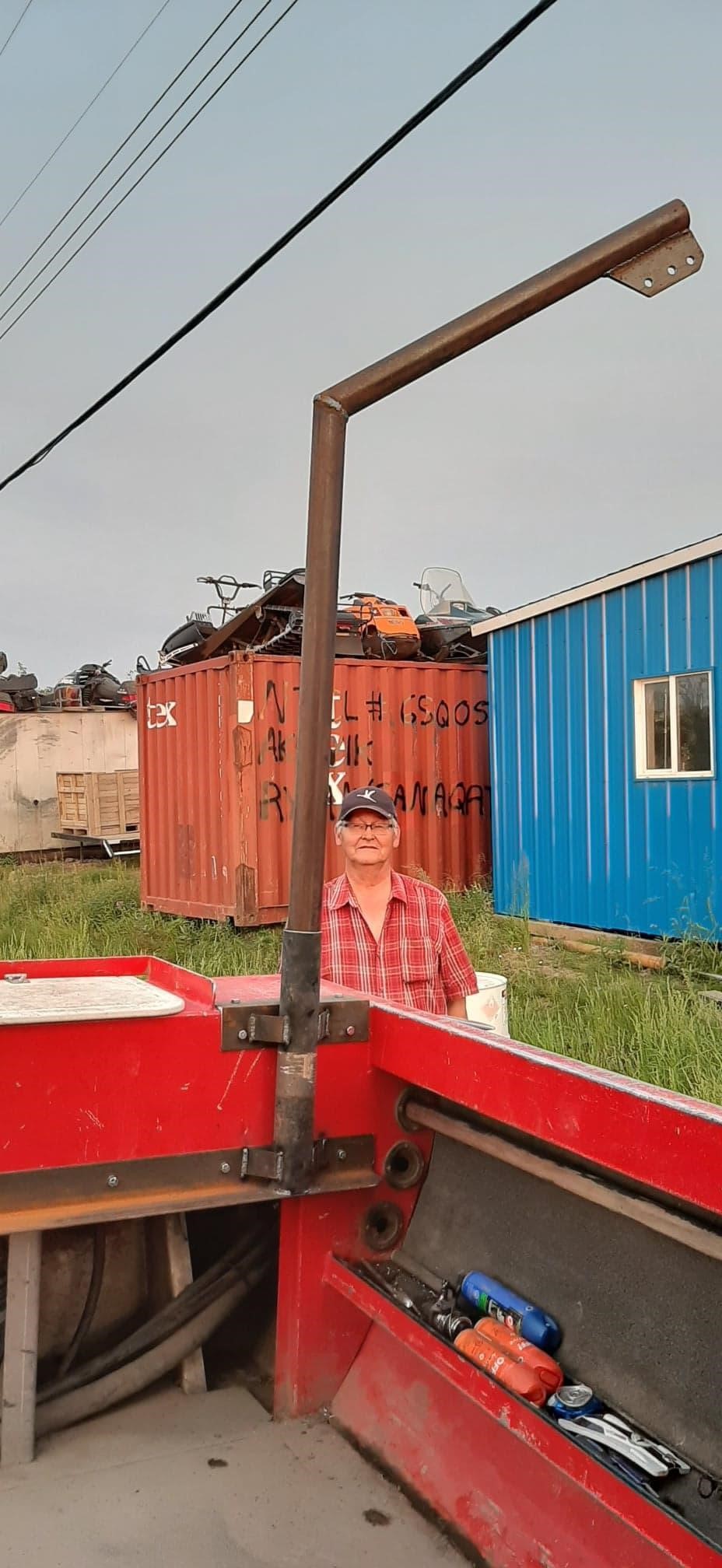
On our side, we are thinking that the rivers we just navigated should be sampled as they provide precious information of what type of sediment is transported from the land to the sea. After a discussion with the logistics team, we decide to add 12 additional stations on the program already loaded considering the narrow forecast window. Along with Dave, it is decided that an extra night will be spent in Aklavik in order to start sampling on transit the following day. Dave and his wife Mina warmly welcome our field team for that extra night in Aklavik!
On July 26, under still strong winds, Dave is confident and successfully achieves the goal of the day with the field team! Upon the arrival of the 7 first samples back to shore, a helicopter from Canadian Helicopter is sent to taxi the water back to the lab in Inuvik. A night shift for the lab team, all ready for biogeochemistry and optical analysis, begins. The following day is quiet at Shingle Point as the field team waits for the winds to die down in-between two weather systems.
The time spent at Shingle Point represents a great opportunity for the field team to meet with the people who are staying there for fishing. Nearly 20 small but very comfortable cabins stand on this narrow sandy peninsula where welcoming families invite the field team for lunch. The field team barely have the opportunity to consume their dry food at the camp thanks to all the generosity on site! Due to the summer’s continuous daylight, life at Shingle Point never really stops. Adults and even young kids are active at any time, more linked to their own tasks rather than to a (non-existent) light cycle. Traditional fishing and fish-smoking take place in tandem with a fish survey conducted for Department of Fisheries and Oceans.
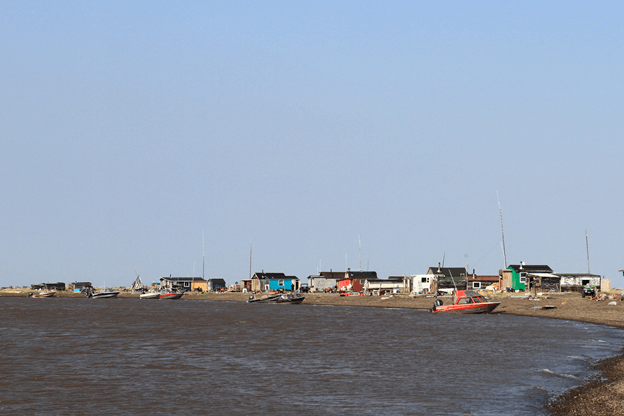
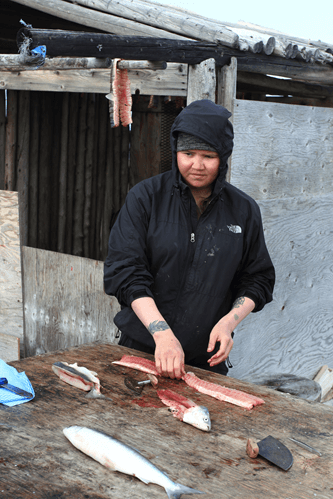
The weather window is now here, 2am on the dot, and the field team is already on the go with Dave and his son David for offshore sampling. Limits for safety and fuel restrictions are fixed, and the team sails East then North as far as 30km off the coast of Shingle Point towards the Beaufort Shelf (see Figure 6).
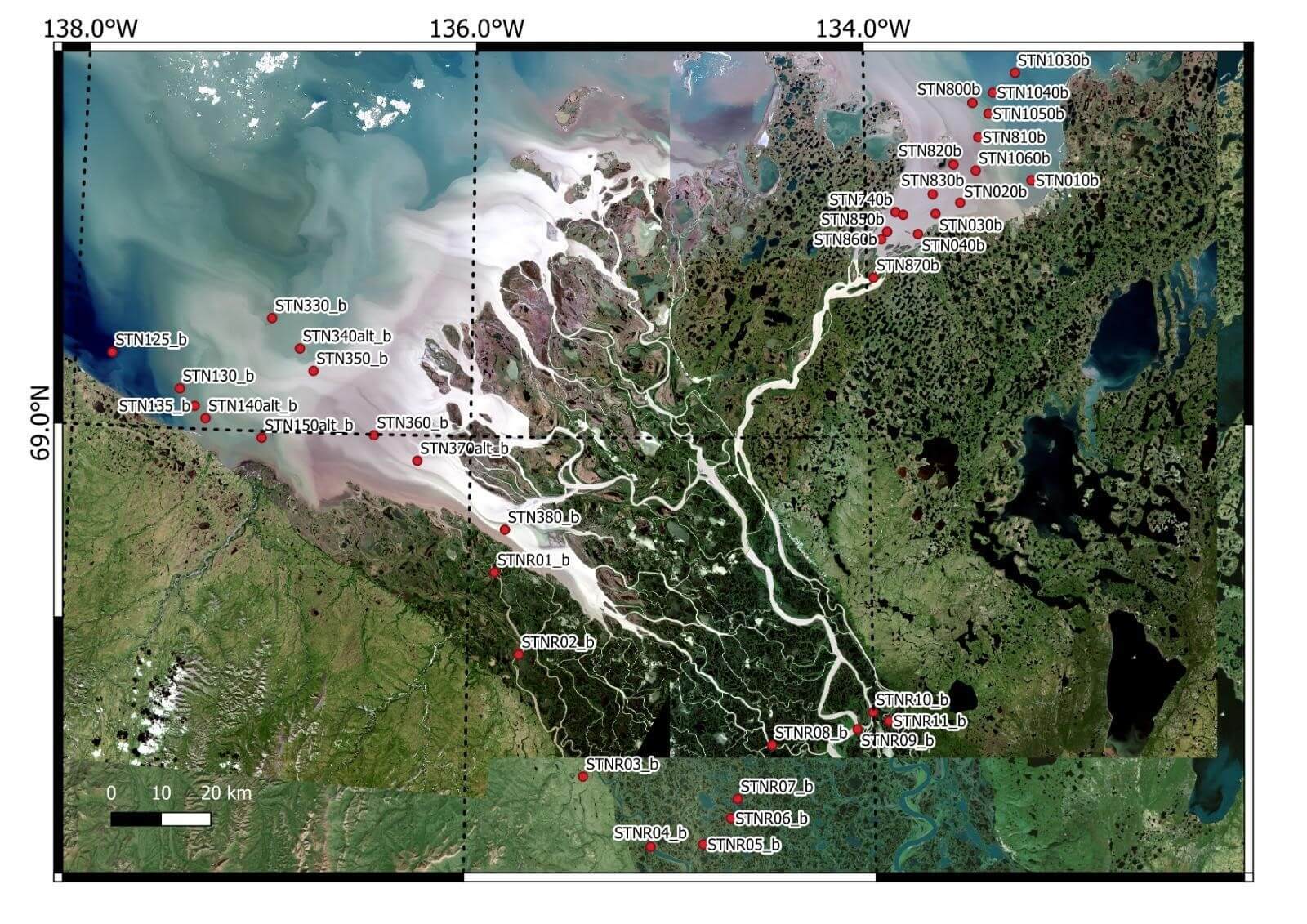 The 21 ft boat handles the sea better than our scientist sailors, with big waves and swell by the shelf. But regardless, they complete a great sampling program with 6 additional stations. As Joannie flies to meet the field team at Shingle Point to taxi the water samples back to the lab, through the view of the helicopter window she realises how beautiful and heterogenous the Delta is in terms of ocean and river colours. The field team and Joannie spend 20 minutes together to exchange coordinates for the additional river program planned the day after. The field team are exhausted but the beauty and quietness of the place will rejuvenate them for the coming sampling night again!
The 21 ft boat handles the sea better than our scientist sailors, with big waves and swell by the shelf. But regardless, they complete a great sampling program with 6 additional stations. As Joannie flies to meet the field team at Shingle Point to taxi the water samples back to the lab, through the view of the helicopter window she realises how beautiful and heterogenous the Delta is in terms of ocean and river colours. The field team and Joannie spend 20 minutes together to exchange coordinates for the additional river program planned the day after. The field team are exhausted but the beauty and quietness of the place will rejuvenate them for the coming sampling night again!
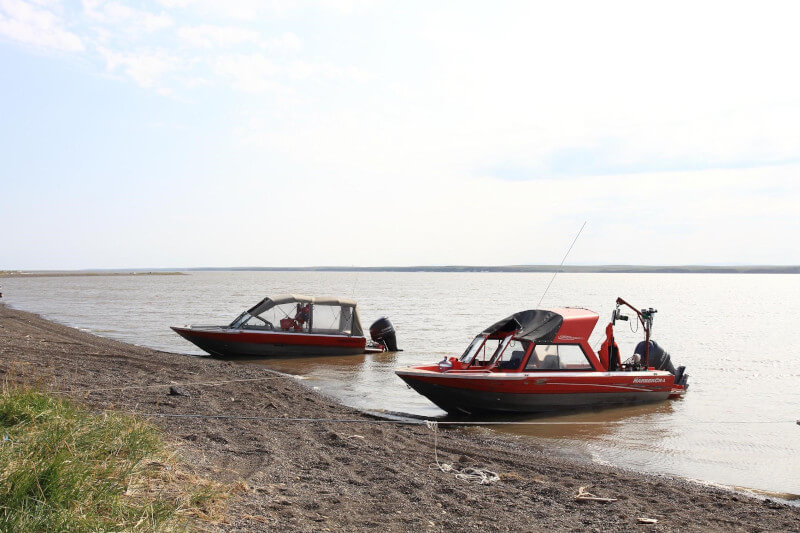
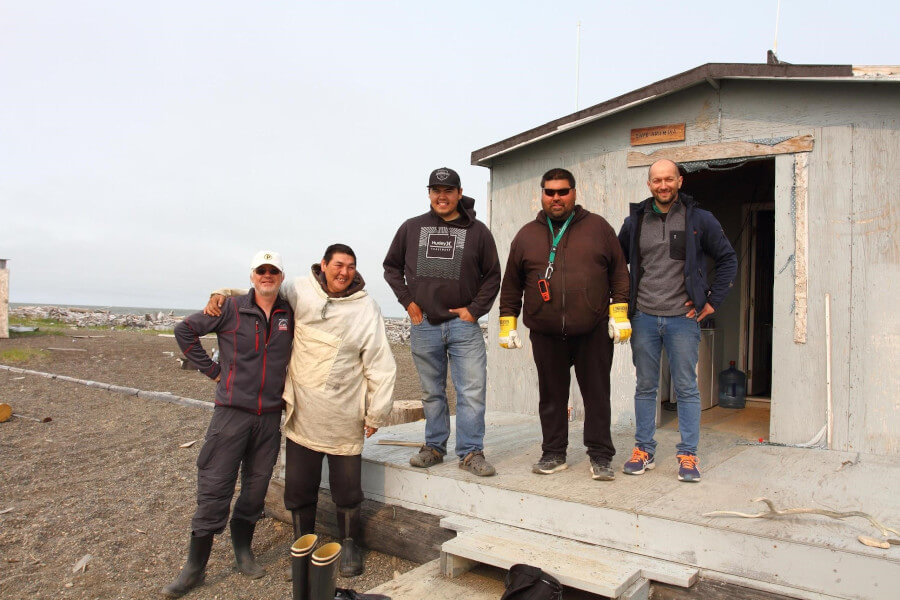
Meanwhile, the lab team is juggling water samples in the lab for a long day and night as each sample takes approximately one hour to fully process, and only 4 hours will separate the Delta water delivery from the river water delivery. Hundreds of liters of water are filtered and stored in many vials! All together, the field team collected 210 litres of water that were sent and processed by the lab team. For each sample, the lab team collects information about 16 parameters, some are analyzed directly, such as absorption of light by phytoplankton, and others are prepared and stored for analysis upon return to several laboratories. Over the course of the 4 sampling days, almost 400 analyses/samples are made by the lab team. This experience is one of people connexion and science program success!
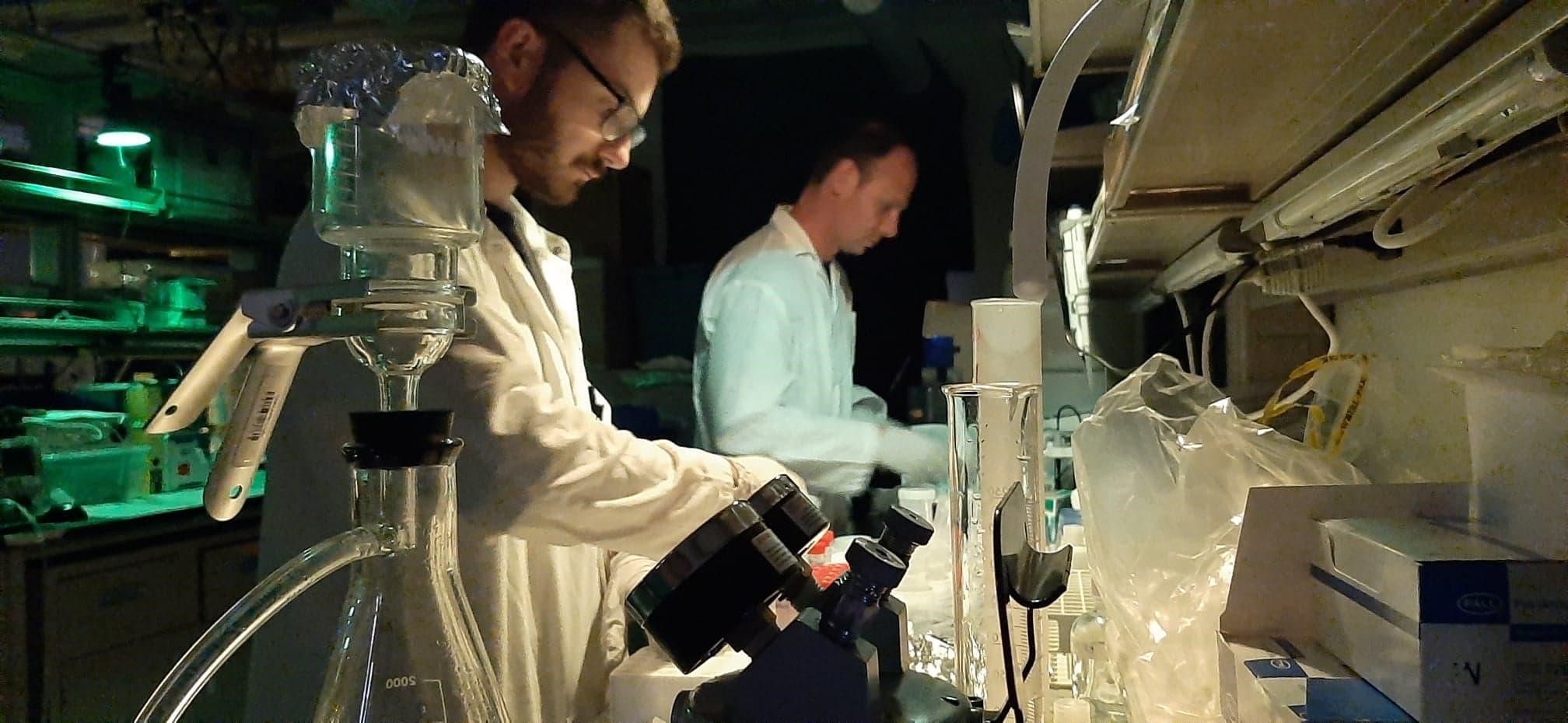
All along, this program would not have been a success without the support of the Aklavik Hunters and Trappers Committee (HTC) and Aklavik HTC super resource person Michelle Gruben, the partnership with Dave’s family, Thomas’ never-ending positivity and strength, and Shauna's generosity with last-minute cabin rental modifications.
The Aurora Research Institute was an inherent part of this expedition’s success as the entire team provided unwavering support towards the logistical efforts. Thank you Joel McAlister and Bessie Rogers for all the support you keep providing to our team.
Written by Joannie Ferland (Takuvik) and Édouard Leymarie (LOV) and edited by Emmanuel Devred (DFO), Andrea Hilborn (DFO) and Martine Lizotte (Takuvik).


